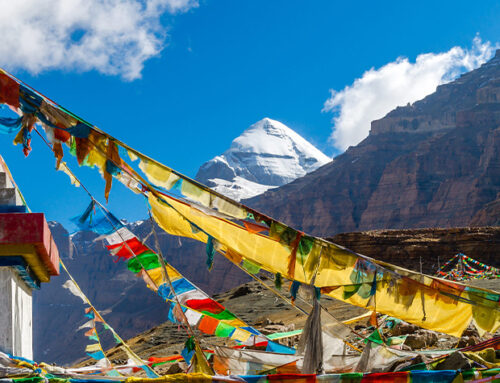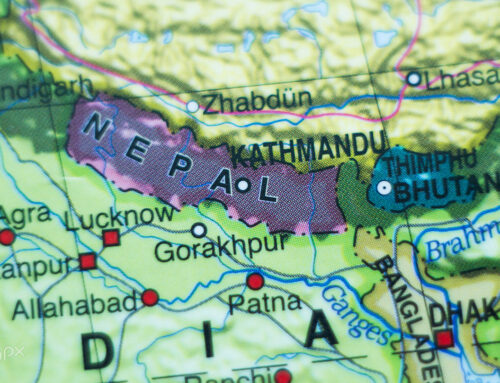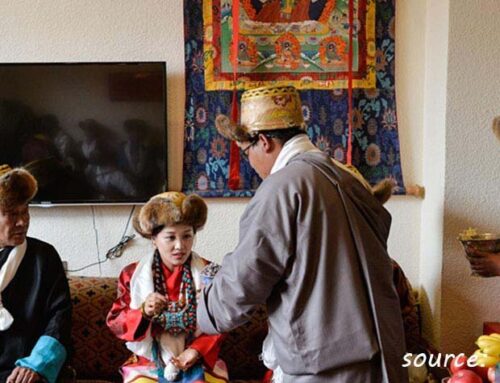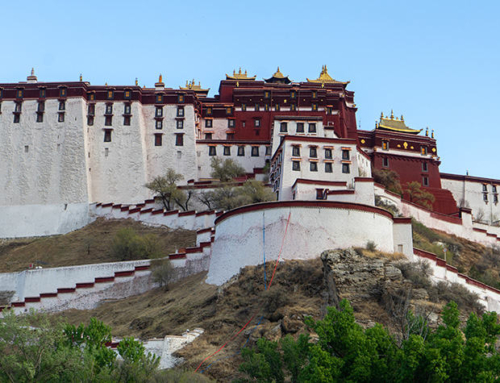Tibetan sand mandalas are intricate and colorful geometric designs made from colored sand, representing various deities, cosmological symbols, and spiritual concepts. They hold deep significance in Tibetan Buddhism and serve as powerful tools for meditation, healing, and spiritual awakening. The creation and subsequent dismantling of these mandalas are accompanied by rituals and ceremonies, highlighting the impermanence and transitory nature of existence.
Introduction of Tibetan Sand Mandalas
Tibetan sand mandalas have captivated people around the world with their intricate beauty and spiritual symbolism. These unique art forms have a rich history rooted in Tibetan Buddhism and offer profound insights into the nature of reality and the human experience.
Creation of Tibetan Sand Mandalas
The creation of a Tibetan sand mandala is a meticulous and time-consuming process. Skilled monks, trained in the art of mandala construction, carefully place colored sand grains to form intricate patterns and designs. They use metal funnels called “chak-pur” to precisely release the sand onto a flat surface, allowing for precise control over the placement of each grain.
The materials used in creating a mandala are carefully selected. The sand, which is often dyed using natural pigments, is sourced from various sacred sites, rivers, and mountains. The colors chosen for each mandala hold specific symbolic meanings, representing various elements, deities, and states of consciousness.
Purpose and Function
Tibetan sand mandalas serve multiple purposes within the context of Tibetan Buddhism. They are created as a form of meditation, with the process itself being deeply meditative and transformative. The concentration required to create such intricate designs helps practitioners attain a state of focused awareness and mindfulness.
Furthermore, sand mandalas are believed to possess healing properties. The intricate patterns and vibrant colors stimulate the senses and promote a sense of peace and harmony. Viewing a completed mandala is said to have a calming effect on the mind and can facilitate emotional and spiritual healing.
Additionally, sand mandalas are considered symbolic representations of the universe. They depict the cosmic order and the interconnection of all beings. The intricate patterns symbolize the intricate web of existence, while the central deity or symbol represents the focal point of spiritual realization.
Preservation and Destruction
One of the most unique aspects of Tibetan sand mandalas is their impermanence. Once a mandala is completed, it is not meant to last forever. It is a reminder of the transient nature of existence and the Buddhist concept of detachment.
After the completion of a sand mandala, it is typically displayed for a short period, allowing people to appreciate its beauty and absorb its spiritual energy. However, it is eventually dismantled in a carefully choreographed ritual. The sand is collected and often returned to nature, such as being released into a flowing river, symbolizing the impermanence of all things.
Impact and Influence
Tibetan sand mandalas have gained global recognition for their intricate artistry and profound spiritual symbolism. They have transcended their cultural and religious origins and have become symbols of peace, harmony, and mindfulness.
The aesthetic appeal of sand mandalas has attracted artists and enthusiasts from various backgrounds, leading to the creation of modern adaptations and interpretations. Contemporary artists, inspired by Tibetan traditions, have integrated sand mandalas into their artwork, often incorporating new materials and techniques.
Cultural Context
The creation of sand mandalas is deeply rooted in Tibetan Buddhism and reflects its core teachings. Tibetan monks undergo years of training and initiation to develop the necessary skills and understanding required for mandala construction. The process is seen as a spiritual practice and an act of devotion.
Tibetan cultural festivals and celebrations often feature the creation of sand mandalas, providing opportunities for the wider community to witness the sacred art form and engage in collective spiritual experiences.
Modern Adaptations
In recent years, Tibetan sand mandalas have found new expressions in the digital realm. Artists have embraced technology to create digital representations of mandalas, bringing the ancient art form into the modern age. Digital mandalas offer new possibilities for exploration and experimentation, while still honoring the traditional symbolism and aesthetics.
However, the commercialization and commodification of sand mandalas have raised concerns. Some argue that the mass production and sale of mandala-inspired products may dilute the spiritual and cultural significance associated with these sacred artworks.
Conclusion of Tibetan Sand Mandalas
Tibetan sand mandalas are more than just beautiful works of art; they are intricate expressions of spirituality, mindfulness, and interconnectedness. Their creation and dismantling offer valuable lessons on impermanence and detachment, reminding us of the transient nature of existence. Through their aesthetic allure and profound symbolism, Tibetan sand mandalas continue to inspire and captivate people around the world.
FAQs Of Tibetan Sand Mandalas
Q1) What is the purpose of creating Tibetan sand mandalas?
Answer) Tibetan sand mandalas serve as a form of meditation, healing, and spiritual awakening. They promote mindfulness, peace, and harmony.
Q2) How long does it take to create a sand mandala?
Answer) The time required to create a sand mandala varies depending on its size and complexity. It can take days, weeks, or even months to complete a mandala.
Q3) Can sand mandalas be preserved for a longer period?
Answer) Sand mandalas are inherently temporary and are not intended to be preserved for a long time. They are usually dismantled after a short display period.
Q4) Do sand mandalas have specific designs or patterns?
Answer) Yes, sand mandalas have specific designs and patterns that hold symbolic meanings. Each element and deity within the mandala represents specific concepts or states of consciousness.
Q5)Are sand mandalas only created by Tibetan Buddhists?
Answer) While Tibetan Buddhists are renowned for their expertise in creating sand mandalas, the practice has inspired artists and enthusiasts from various backgrounds to create their own interpretations.
About Tibet Travel & Tours
Tibet Travel & Tours is a local travel agency in Tibet that offers unique and authentic experiences to travelers from all around the world. As a leading tour operator in Tibet, we provide high-quality Tibet Travel services that are tailored to our clients’ needs and preferences.
Our team of experienced and knowledgeable professionals strives to ensure that our clients have a hassle-free and memorable trip in Tibet. We specialize in various types of tours, including cultural tours, trekking and hiking tours, and adventure tours.
Our commitment to providing exceptional service has earned us a reputation as one of the best local travel agencies in Tibet. Contact us today to plan your unforgettable trip to Tibet.
Explore Tibet with a local Tibetan Travel Agency
If you’re looking to explore Tibet, starting your journey with a reputable Tibetan travel agency in Tibet is crucial. Tibet Travel & Tours is a great choice to begin your adventure with their extensive knowledge of the region and commitment to responsible tourism.
Their Tibet tour packages cater to a range of interests and budgets, making it easy to plan a trip that suits your needs. Before embarking on your tibet tour, it’s essential to have the right Tibet travel information and necessary documents, including a Tibet travel permit.
The Tibet Travel Planner provided by i-Tibet travel is an excellent resource to plan your trip, including tips on what to pack, where to stay, and what to see.
For beginners, the “About Tibet” guide provided by i-Tibet travel offers a comprehensive overview of the region’s history, culture, and top attractions. So, start your Tibet travel plan here with i-Tibet travel and discover the magic of Tibet for yourself.










